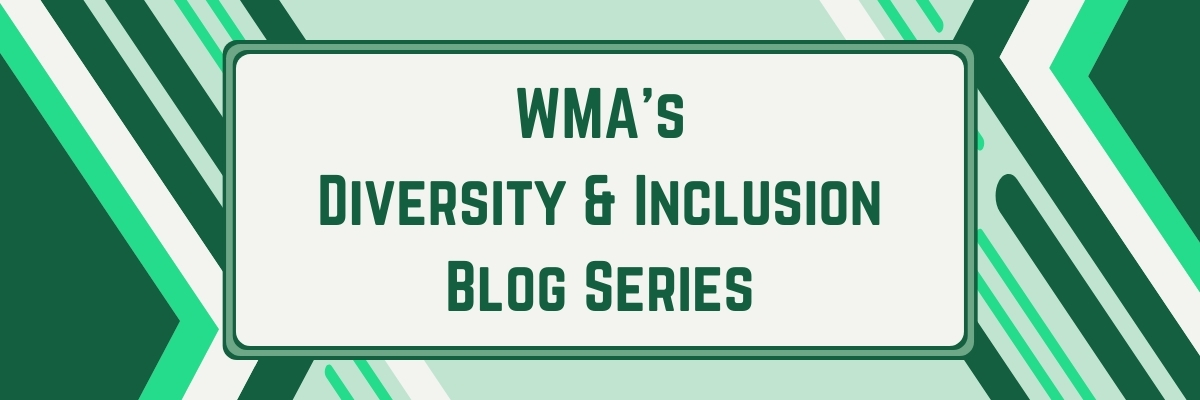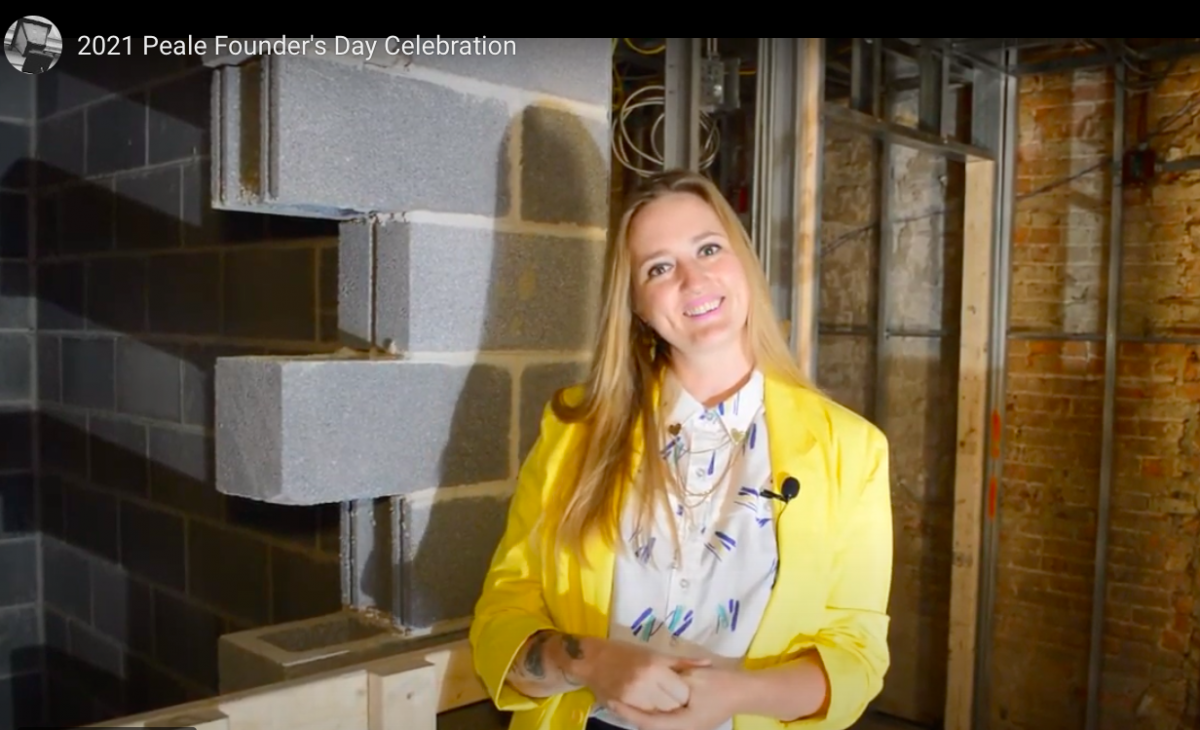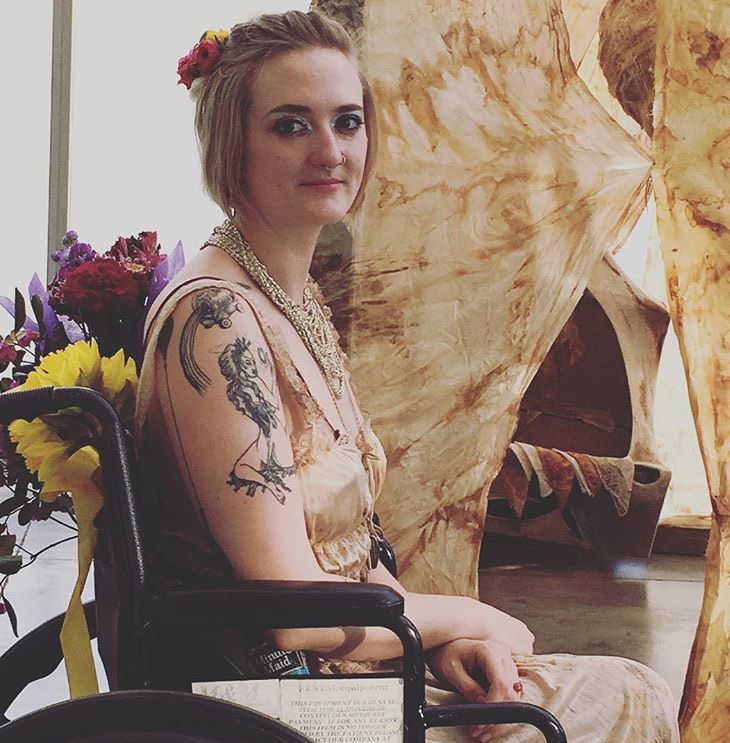
Robin Marquis
Through a sequence of interviews, WMA’s Diversity & Inclusion (D&I) Blog Series will examine the work of individuals across a variety of disciplines, seeking to broaden perspectives, inspire big-picture ideas, and share expertise on wide-ranging museum diversity and inclusion practices. To start off the D&I Blog Series, we interviewed Robin Marquis (they/them) – an artist, facilitator, disability activist, and the Accessibility and Operations Manager at The Peale Center who has over a decade of experience leading initiatives, programming, and community collaborations with cultural institutions of all types and people of all ages.
Here, Robin shines a light on the importance of diversity, equity, accessibility, and inclusion (DEAI) in museum practice, discusses The Peale's ongoing commitment to ensuring inclusivity through it's programs, and shares advice for museum professionals.
As an artist, facilitator, and disability activist, how did you become interested in accessibility and inclusion within the museum field specifically?
I became disabled as a young adult and was very lucky to be living in Oakland, CA—the birthplace of the Disability Justice movement—alongside artists and leaders from Sins Invalid. These folks were my first teachers in intersectional accessibility that centers the experience of disabled BIPOC, queer, trans, and poor folks. They helped me understand and embrace my identity as a disabled person. It wasn’t until later that I got involved in the museum world. I saw museums as a space where culture, art, and education came together—the confluence of my interests and passions. Unfortunately, as I moved into the museum world, both literally and figuratively, I encountered many physical and knowledge barriers to my own involvement. I was directly impacted by spaces that weren’t accessible and people that didn’t understand accessibility. My response was to become an advocate and educator both for myself and others in disability communities.
Can you please share an accessible and inclusive practice or initiative from The Peale and/or another institution that you find to be a strong example for others to learn from and adapt?
When The Peale moved its programs online at the beginning of the pandemic, we made a commitment to provide human-generated captions and ASL interpretation, whether it was requested or not. Our team agreed on prioritizing access as a non-negotiable item in our budget. We knew this was a way to build trust and relationships and show our commitment to accessible practice. Not only did our attendance from people who use these services skyrocket, but simply offering our events virtually opened up our programs to people around the world, tripling our overall attendance. This really raised our awareness of what access can look like in action and is something we are committed to continuing to offer.

The Peale Center is a model in the cultural sector for its commitment to diversity, equity, accessibility, and inclusion (DEAI), and the work done to ensure inclusive community spaces, programs, and communications. As The Peale’s Accessibility Manager, can you please speak to the importance of museums and other cultural institutions having an internal accessibility leader who can examine accessibility at a high level, weave DEAI practices into daily operations, and build a culture of accessibility?
Accessibility should be everyone’s responsibility and one person’s explicit responsibility. There’s so much work and learning to do in the museum sector—and in society in general— about better including people with disabilities, and access practices show up in every single role and department of a museum. People are rarely taught about DEAI practices in their formal education and it can be intimidating (and exciting) when we all realize how much we each have to learn. It's hard to make mistakes, and no one wants to harm people. Cultivating a supportive learning environment where trying new ideas and learning from those mistakes—especially ones related to identity and oppression—is not easy, but it’s essential.
Because it’s been my explicit role to continue bettering our access practices, I’ve been able to lead my team’s collective learning process. Members of our team have become invested in accessible practices in their roles partly because they have someone they can turn to think through things, try things, fail, and get support.
The Peale’s recent publication, Redefine/ABLE: Challenging Inaccessibility, features a conversation between yourself, Dr. Audra Buck-Coleman, and Dr. Cheryl Fogle-Hatch on ableism and the effects of the pandemic on the disability community. Coming out of the year 2020, the narrative around accessibility and inclusion in the cultural sector is changing. Can you speak to this shift? What are the key issues that still need to be addressed?
Because of the pandemic, many people who had never experienced massive upheavals in their own agency and access felt that slip away and lost access to the things they rely on daily. Many folks came together quickly to problem solve and address these barriers. That’s the same kind of thinking we should be doing every day to make sure that our spaces, programs, and communication consider the access needs and barriers of all people. Many things that disabled folks have been fighting for decades became the norm very quickly, and many of us benefitted. When human centered, universal design is put into place, it benefits everybody—the last year and a half have shown us that.
Going forward, we have to stop viewing disability in a vacuum. We can’t look just to ADA guidelines alone to fully grasp the needs and dreams of disabled communities. As people learn about disabled identity and communities, it’s especially important not to fall into the practice of only thinking about white, class privileged disabled people; we need to rely on the leadership and experiences of disabled Black, Latino, Indigenous, and working-class folks who are disproportionately impacted by lack of access. As people in the museum sector begin to engage more seriously with inclusion, it is the time for our work to embrace anti-racist, class-aware, accessibility practices.

If there is one strategic, actionable step that you can encourage museum professionals to take today to get started with accessibility and inclusion work within their own institutions, what would that be? What is your biggest piece of advice?
Focus on communication and transparency with your audience. The first steps of it are free. It requires an incredibly useful self-audit: you have to look at what about your museum is accessible and what isn’t. So much of accessibility is about access to knowledge and information. If a disabled person wants to attend your museum and they can’t make informed decisions—regardless of what access practices you’ve employed—that lack of information becomes a barrier.
Communicating clearly on your website and through social media also opens a channel for disabled folks to be a part of your evolution as an accessible organization. Add an accessibility page on your website with access information and a designated person to reach out to. Weave that information into the boilerplate language on all channels of communication for events and programs. Then invest money into making sure your website is accessible and not by using access overlays (for more information see this article on “Why Free Tools Just Aren't’ Enough to Achieve Web Accessibility Compliance”.)
Something as simple as clearly explaining what people can expect and how they can navigate your space and programs demonstrates a level of commitment, care, and investment to disabled audiences. This begins to build the trust and relationships that are the foundation of creating a more accessible and inclusive museum.
THANK YOU Robin Marquis!

Add new comment